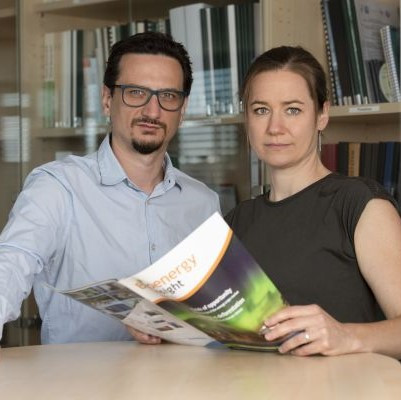Resource-efficient fuel additives for reducing ash related operational problems in waste wood combustion
Die Verbrennung von Altholz zur Energieerzeugung bietet beachtliche ökonomische Vorteile im Vergleich zur Verwendung von unbehandelter holzartiger Biomasse. Dabei treten allerdings vermehrt aschebedingte Probleme wie Verschlackung, erhöhte Depositionsbildung und Korrosion auf, welche durch die Verwendung von Brennstoff-Additiven, wie zum Beispiel recyceltem Gips, erheblich reduziert werden können. Ziele des Projekts sind unter anderem die Entwicklung eines effizienten Brennstoff-Additiv Konzeptes sowie dessen Umsetzung in einer Industrieanlage und die Entwicklung eines Konzeptes, wie Altholz und Additiv erfolgreich vom Abfallstrom bereitgestellt und sowohl ökonomisch als auch ökologisch sinnvoll in den Prozess integriert werden können.
Das Hauptziel des Projektes REFAWOOD stellt jedoch die Optimierung des derzeitigen ökonomischen und ökologischen Zustandes sowie die Erweiterung des Marktes für die Verwendung von Altholz in Biomasse Verbrennungsanlagen, durch die effiziente Verwendung von ressourcenschonenden Brennstoff-Additiven, dar.
In Österreich wird BIOENERGY 2020+ an der Entwicklung des Additiv-Konzeptes mitwirken (grundlegende Untersuchungen zur Auswirkung der Gips Zugabe sowie Laborversuche). Des Weiteren wird BIOENERGY 2020+ das Arbeitspaket „Fuel and additive value chain“ leiten, welches die Konzeption der Versorgungskette sowie die Nutzung der anfallenden Asche zum Thema hat. Die Firmen LASCO und EGGER werden industrielle Altholz-Verbrennungsanlagen zur Verfügung stellen, in welchen das neu entwickelte Adaptive-Konzept getestet wird. Die Auswirkungen der Additiv-Zugabe auf die Verschlackung, Depositionsbildung und Korrosion in den Industrieanlagen wird dabei von BIOENERGY 2020+ untersucht. Die Verbreitung und Nutzung der Erkenntnisse, insbesondere der österreichischen Beiträge, wird von BIOENERGY 2020+ übernommen.
Projektvolumen
EUR 310.000,-- (BE2020)
Projektlaufzeit
2016-01-01 - 2019-03-31
Finanzierung
FFG; ERA-NET Bioenergy - 9th call
Projektpartner
Research Industrial Systems Engineering (RISE) Forschungs-, Entwicklungs- und Großprojektberatung GmbH
Umeå University, Dept. Applied Physics and Electronics
Luleå University of Technology, Department of Engineering Sciences and Mathematics
ENA Energy AB
Gips Recycling AB
Utrecht University
Avans University of Applied Sciences
Dekra
BECC B.V.
Instytut Technologii Drewna
DBFZ Deutsches Biomasseforschungszentrum gemeinnützige GmbH
Endress Heizanlagen
Fritz Egger GmbH & Co. OG
LASCO Heutechnik GmbH
Area Management

Elisabeth Wopienka / Manuel Schwabl
elisabeth.wopienka@best-research.eu manuel.schwabl@best-research.eu